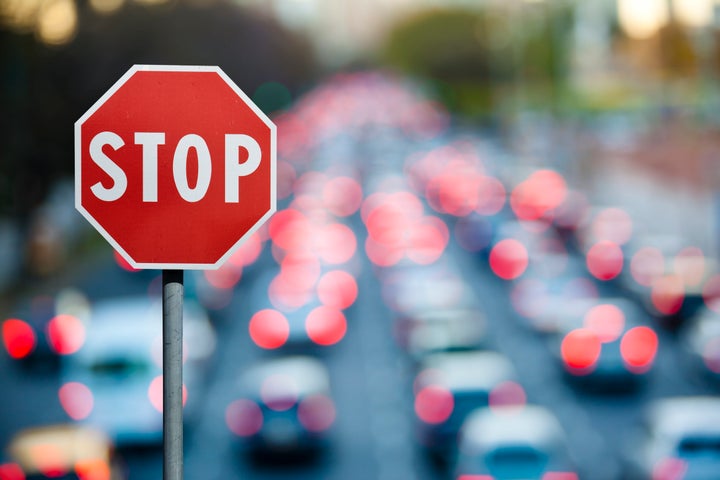
Americans have always loved their cars, but younger generations may be changing that. Millennials are driving less and taking public transportation more often, and they’re increasingly not even bothering to get a driver’s license.
Transportation experts say that it’s all part of a movement of people—and jobs—into cities, marking a distinct change from folks of previous generations, who needed their cars in the suburbs. And living in denser urban areas makes going without a car easier than ever.
“People are wanting to live lives in which they are less dependent on a car,” says Tony Dutzik, a senior policy analyst with the think tank Frontier Group. Dutzik’s research in a 2012 study shows that young people have been driving nearly a quarter fewer miles within the last decade than they did 20 years ago, and that they have increased their mileage on public transportation by 40 percent.
So where are the best cities for traveling without a car?
The experts we talked to cite large European cities like Amsterdam in the Netherlands and Copenhagen in Denmark as the models for car-free living. In the U.S., there are two categories of cities for carless travel. First, there are the larger, older U.S. cities like New York, Washington, D.C., Chicago, and San Francisco, which feature compact downtown areas with strong networks of public transportation, and have multiple transit options within walking distance in a given neighborhood. Second are cities such as Minneapolis, Portland, Seattle, Denver, and even Los Angeles, which have begun building or enhancing public transportation systems and bike lane networks in the last decade, offering strong alternatives to driving cars — and cutting down on traffic and pollution, too.
In the first category, New York City is, without a doubt, one of the best places to live without a car. It tops Walk Score’s lists of both the most walkable cities and the most transit-friendly cities in the country, and maybe that’s why 54.5 percent of all households there are car-free, the highest percentage in the U.S.

The city’s 2013 introduction of the Citi Bike program, as well as the expansion of bike lane networks and pedestrian-only plazas in the last few years, were major boons for New Yorkers who want to be car-free, according to Caroline Samponaro, deputy director of Transportation Alternatives, a New York-based walking and bicycling advocacy group. She calls the redesign of Queens Boulevard, one of the busiest — and most fatal— roadways in the city, a symbol of the drastic improvements made.
Despite initial resistance by Queens residents, Samponaro points out that the revamp has provided a safer road. “That was the boulevard of death, and now it has a green protected bike lane running down the center of it,” she says proudly.
In Washington, D.C., the city’s extensive underground Metro system was ranked No. 1 in the country in a 2017 study by SmartAsset (though residents complain about construction and unreliability), and the new Capital Bikeshare program, with its 440 stations across the metro area, costs only $85 for an annual pass.
In Chicago, the “L” trains make up the second-largest city rail system in the U.S. Between 2011 and 2015, the city added more than 100 miles of protected bike lanes, and has committed to building 50 more miles by 2019.
In the second category of cities, Seattle has been rapidly expanding bus and light rail systems to deal with explosive population growth through its $930 million Move Seattle plan.
Portland, Oregon, is the leading city in the U.S. for bicycle commuting, where 7 percent of all residents cycle to their jobs. In 2015, the city opened Tilikum Crossing over the Willamette River, the largest car-free bridge in the country, and it wants 25 percent of all trips in Portland to be made on bikes by 2030.
Minneapolis, despite its chilly winter temperatures, is also a huge biking city, with 5 percent of all residents commuting on two wheels. It also has one of the most extensive networks of bike lanes in the country, with 75 miles added since 2011. The city’s Midtown Greenway, a nearly 6-mile-long bike- and pedestrian-only trail built over abandoned railroad tracks, was opened in 2000, and connects downtown areas with the suburbs.
Ralph Buehler, a professor of urban affairs and planning at Virginia Tech who studies transportation policy, says that while bike commuting in the U.S. has hit an all-time high in recent years, cities still need to build a lot more bicycle infrastructure to make the experience safer, which will make it even more of a draw.
“Very often, your bike lane or your path ends, and then it’s just, good luck, until you find the next thing,” he says. “There are only a certain number of people who are willing to put up with that.”
Europe, he says, has done an excellent job at that. In Copenhagen, where bicycle traffic has risen by 68 percent in the last 20 years, more people now travel by bicycle in downtown areas than they do in cars. The city’s Cycle Superhighway, a network of bike paths connecting downtown with suburban areas, opened in 2012, and an expansion will ultimately yield 300 miles of bike lanes by 2018.
And Hamburg, Germany, wants walking and biking to be the primary ways of getting around the city. It’s building a “green network” of parks and open spaces connected by bike paths that will make up 40 percent of the city’s land, and will make the bold step of eliminating cars altogether within 20 years.
Buehler speculates that cars may no longer be status symbols for younger people the way they were for past generations, making transit networks all the more important. “For them, it’s more a mobility tool, something to move from A to B,” he says, “but they’re not fantasizing about the latest Chevy model.”
